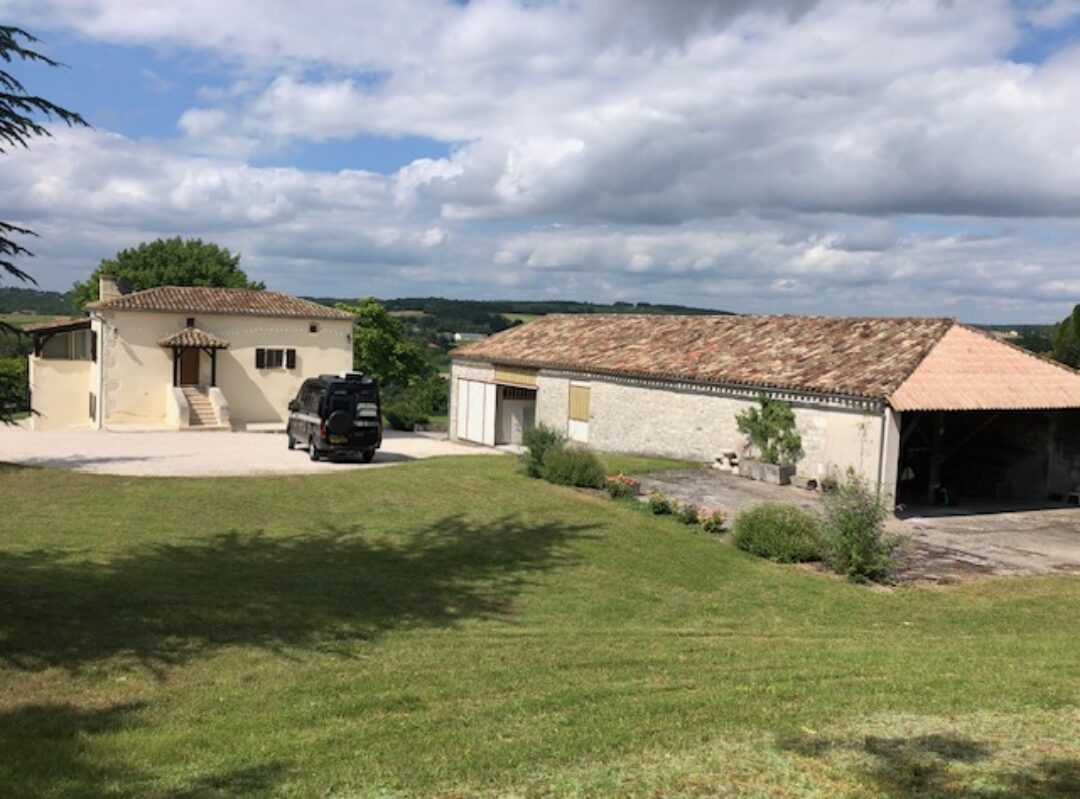We’re starting to see and feel the changing of the seasons with nippier mornings, evenings drawing in and colours starting to turn. We’re hoping that we can continue to camp until late October but need to be a bit more mindful of the weather and temperatures if it is to remain enjoyable, so following the sun will be the order of the day. We’ve been very lucky with regards to rain, a few showers but nothing that has impacted on plans. Other people we’ve spoken to have had quite a lot of rain in the south-west of France and in Spain, unusual for this time of year.
After leaving Angoulême we headed a little further south to Aignan in the far south of the Gers department which we dipped into for the day a few weeks ago. We had a lovely drive through the forests of the Parc Naturel Régional des Landes de Gascogne. Aignan is in the Gascony wine region of Saint Mont – apparently 85% of Gascony wines are white wines. The village of Aignan has a distinctive church and bell tower and the wooden arcaded square gives it a feel of the Wild West – you could imagine tying up your horse outside one of the bars. Our pitch on the small campsite had a beautiful view over the Adour river valley.

From Aignan we were able to do some lovely walks and trips out on the motorbike through the beautiful rolling countryside. There are a few bastide towns in the region although nothing like the dramatic perched villages of the Lot and Dordogne. One trip took us via the village of Lupiac, the birthplace of D’Artagnan, to the town of Auch, capital of Gascony. Although not a huge town, it’s the first place where we have encountered traffic of any kind, probably because all of the schools and workplaces were turning out for lunch. Whilst Auch had an attractive main square overlooking the huge cathedral, we didn’t really make sense of the cobbled back streets running downhill to the river, so didn’t really appreciate its full architectural glory.
We combined a walk and visit at the town of Eauze, capital of Armagnac. It was market day and the changing seasons are reflected in the market produce. We saw our first sign of the Chasselas grapes we learned about in Moissac and bought a bunch to try – nice and sweet but too many pips for Joe’s liking. We’ve seen a lot of signs in the vineyards for Floc de Gascogne – a fortified liquor wine made with two-thirds wine and one-third Armagnac. It was on sale in the market so a bottle was purchased for research purposes. It’s served very cold as an aperitif and goes down very well. The square in Eauze was also very attractive and appealed to us much more than Auch. A press had been set up to press apples bought in by locals who can then depart with their apple juice.
Keeping an eye on the weather we decided to head west towards the Atlantic coast with an overnight stop just outside the town of Saliès de Béarn in the Pyrénées-Atlantique department. LEGEND ALERT – because there always has to be a legend so that the town can create a theme and marketing opportunities around it! Saliès de Béarn is renowned for its natural saltwater spring and legend has it that a wild boar being hunted by medieval hunters hid in muddy marshland but was found dead by the hunters and covered in salt crystals leading to the discovery of the spring. The boar’s death was not in vain as it is used as the emblem for the town with flags, buildings and signs adorned with boar motifs.
The water from the spring is 10 times saltier than sea water and from 1587 locals were allowed to extract it and make salt in their homes – as a handy second income. In the 19th century salt brought prosperity to the town in a different way, through its thermal spas and saltwater cures. Indeed as you drive into the town it has the air and faded elegance of a German or Swiss spa town, with large houses lining the road and an elegant bandstand outside the original spa building, still operating today. The centre itself was very quiet but had some interesting buildings and scenes that don’t seem to have changed since the turn of tyre century. Today salt is still important in thermal cures and a local salt-works produces salt for making jambon de Bayonne.
Next stop – the coast.

















